
Lorikeets 62 Species of Nectar Slurping Seed Eating Carnivores
Last Updated on by Mitch Rezman
Sandra wrote: Hi, I just want to say that I absolutely love the Sunday Birdie Brunch and was wondering If I could request a topic on lorikeet diet, scaley breasted lorikeet in flight My cutie loves her daily fruit veg and lory mix. Do you recommend a certain mix for lories? blue lorikeet I have Joy and Wombaroo at the moment, and the textures and ingredients are so different!
I just can’t figure out which is healthiest… 2 blue streaked lorikeets Thanks & Please keep up the awesome work! – Tilly iris lorikeet
Dear Sandra – Thank you for your kind words, Mitch works very hard on the Sunday Birdie Brunch. We are currently working on a Lory article and hope to be able to put it out soon.
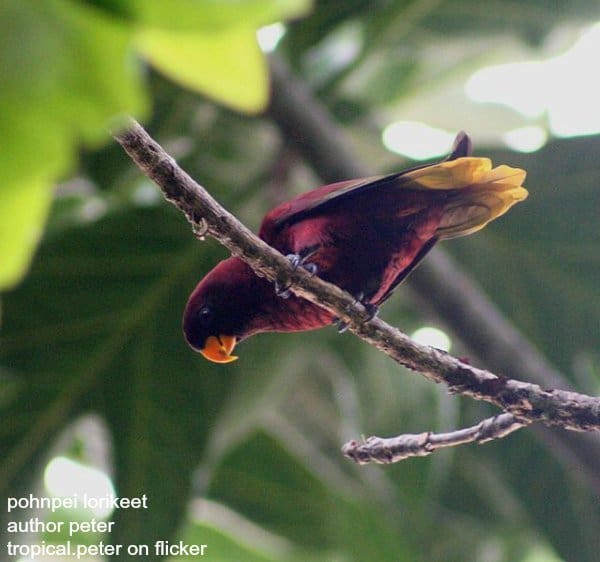
Lory food is quite a different manufacturer to manufacturer. citrine lorikeet We try to offer a selection so the care takers of Lorys have choices. varied lorikeet All varieties of soft bill & Lory food are shown here. Lory Softbill blue crowned lorys The most popular Lory food we offer is Nekton Lory.
PHOTO: Two rainbow lorikeets tuck into pets’ mince in a backyard feeder in Elimbah. (Matt Watson)
“Rainbow lorikeets eating meat leaves bird experts astonished”
Lories can eat pellets as well which can help them have firmer droppings too. Goldenfeast nectar gold is a high quality formulation lorikeet food
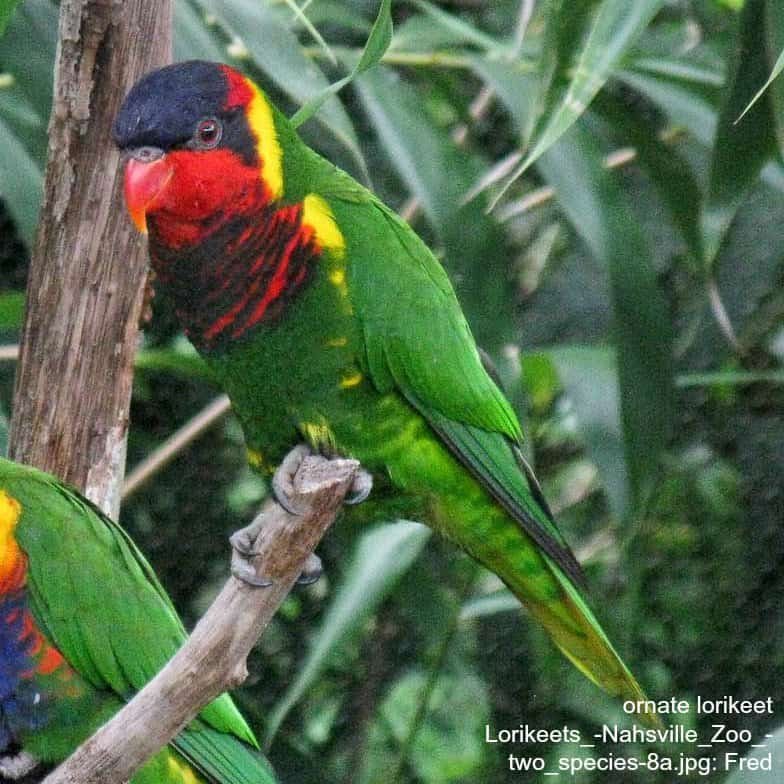
Although seed isn’t recommended it’s appreciated as a treat now and then for larger Lorys like rainbows & scaly breasted – we recommend Higgins Vita canary seed olive headed lorikeet apples – berries – grapes – mango – melons pears – oranges – tangerines should be made available little lorikeet Keep in mind, grocery store fruit has much higher concentrations of sugar than fruit found in the wild. purple crowned lorikeets I hope this helps – Thank you
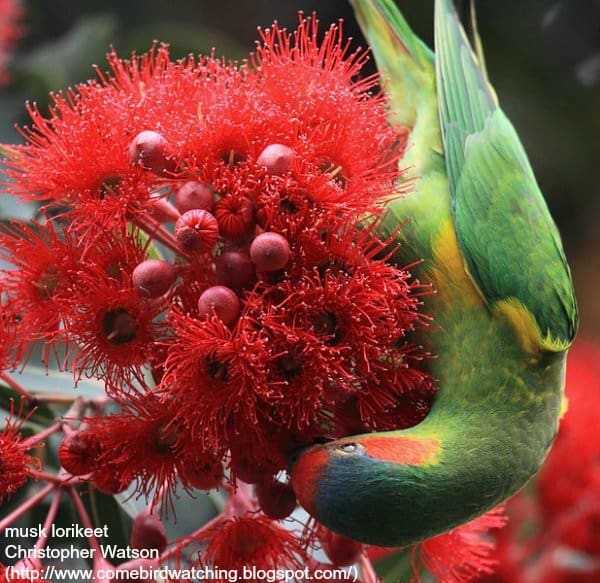
Editors note: But wait there’s more. When most people think of lorikeets they think of rainbow lorikeets (above) which is quite limited considering this lorikeet list:
Black Lory – Blue Lory – Blue eared Lory – Blue crowned Lorikeet – Blue fronted Lorikeet – Black winged Lory – Blue Streaked Lory – Brown Lory – Cardinal Lory – Chattering Lory – Coconut Lorikeet – Citrine Lorikeet – Collared Lory – Dusky Lory – Dutchess Lorikeet – Duyvenbode’s Lory – Edward’s Lorikeet – Fairy Lorikeet – Green Naped Lorikeet – Goldies Lorikeets – Iris Lorikeet – Josepines Lorikeet – Kuhl’s Lorikeet – Leaf Lory – Little Lorikeet – Marogold Lorikeet – Massena’s Lorikeet – Meek’s Lorikeet – Meyer’s Lorikeet – Mindanao Lorikeet – Mitchell’s Lorikeet – Musk Lorikeet – New Caledonian Lorikeet – Olive headed Lorikeet – Orange billed Lorikeet – Ornate Lorikeet – Palm Lorikeet – Papuan Lorikeet – Perfect Lorikeet – Pohnpie Lorikeet – Plum face Lorikeet – Purple crowned Lorikeet – Purple bellied Lorikeet – Pygmy Lorikeet – Rainbow Lorikeet – Red and Blue Lory – Red chinned Lory – Red Collard Lorikeet – Red Fronted Lory – Red Flanked Lory – Red Lory – Red throated Lorikeet – Roger Black Lory – Rosenberg’s Lorikeet – Scaly-breasted Lorikeet – Stella Lorikeet – Striated Lory – Varied Lorikeet – Violet-necked Lory – Weber’s Lorikeet – White Naped Lorikeet – Yellow billed Lorikeets – Yellow-Streaked Lory
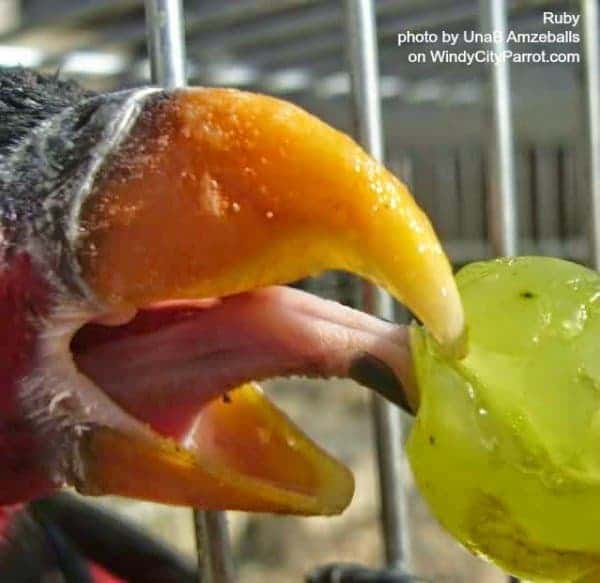
close up of lorikeet tongue sucking the juice from a green grape
What sets lorikeets apart from other species is the brush tip tongue which is very effective at sucking the nectar out of soft fruits and blossoms. feral rainbow lorikeets fighting over a chocolate milkshake And I think we mentioned recently when they’re not at the soda fountain… rainbow lorikeet eating meat …they will chow down on meat. New Caledonian Lorikeet
They make good pets but I can’t speak to all the Lory species.
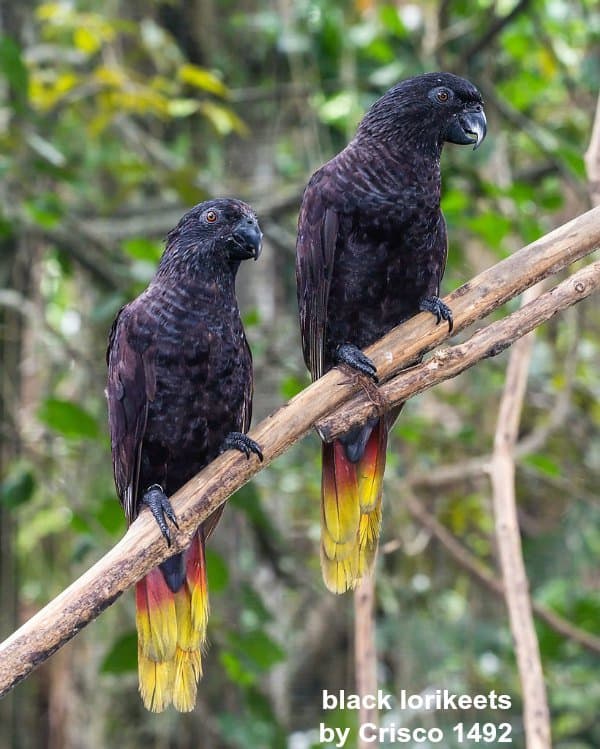
If you think your Red Lored Amazon is a poop machine remember because lories prefer a nectar diet which is usually liquid, the poop can be shot well beyond the confines of their birdcage.
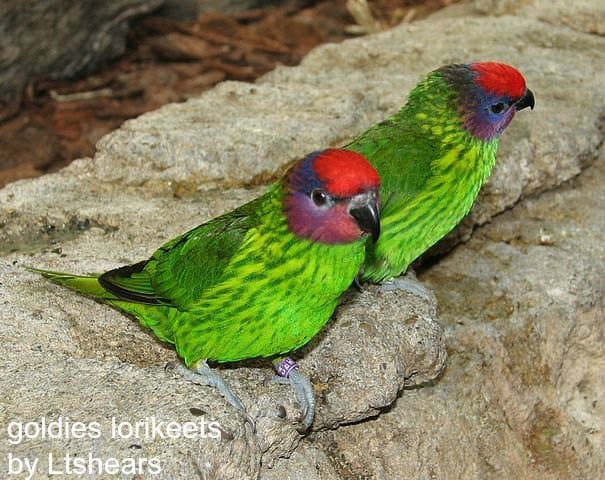 Wall and floor protection are highly recommended for this group of beautiful birds. dusky lory If you’re stuck in the ’70s with wall-to-wall carpeting, a lorikeet is not for you. Mindanao & Blue crowned Lorikeet The most prevalent lorikeet as a pet is the rainbow lorikeet.
Wall and floor protection are highly recommended for this group of beautiful birds. dusky lory If you’re stuck in the ’70s with wall-to-wall carpeting, a lorikeet is not for you. Mindanao & Blue crowned Lorikeet The most prevalent lorikeet as a pet is the rainbow lorikeet.
Eclectus parrots are truly dimorphic meaning you can tell the male whose gender from the female that is red.
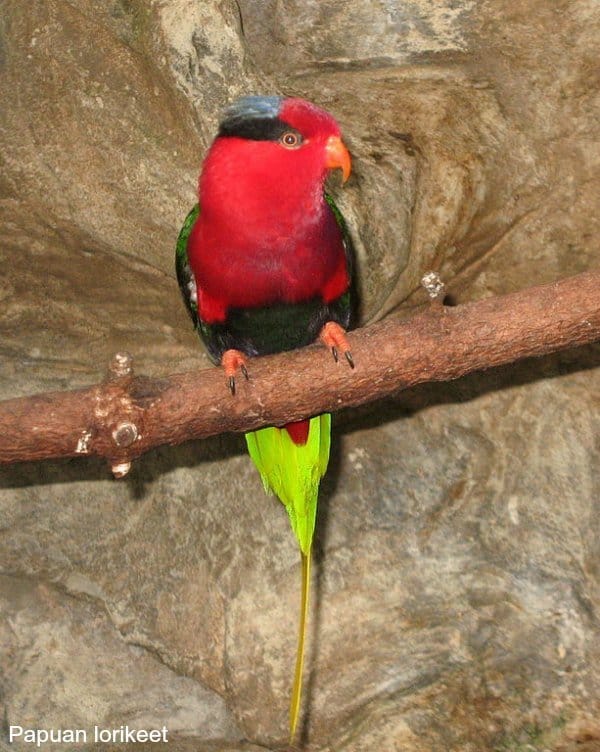
If you look at a pair of rainbow lorikeets generally speaking males will have more dark orange on their breasts whereas the females will have more of a color flow from yellow to orange.
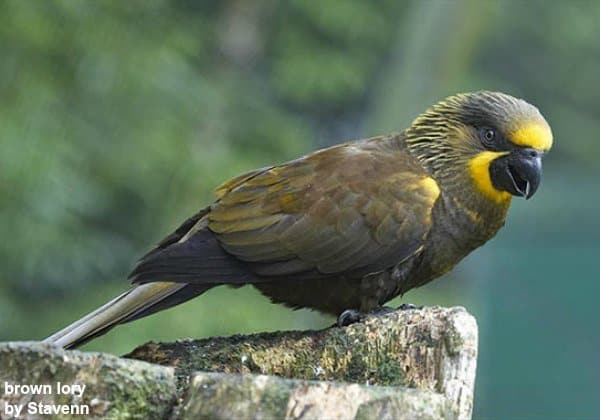
Males tend to have a squared off head while the females have a rounded head and if you were to look at them in a flock the males will puff up threatening any possible suitors to his mate who he will mate with for life In the wild lorikeets feed on as many as 5000 species of plants
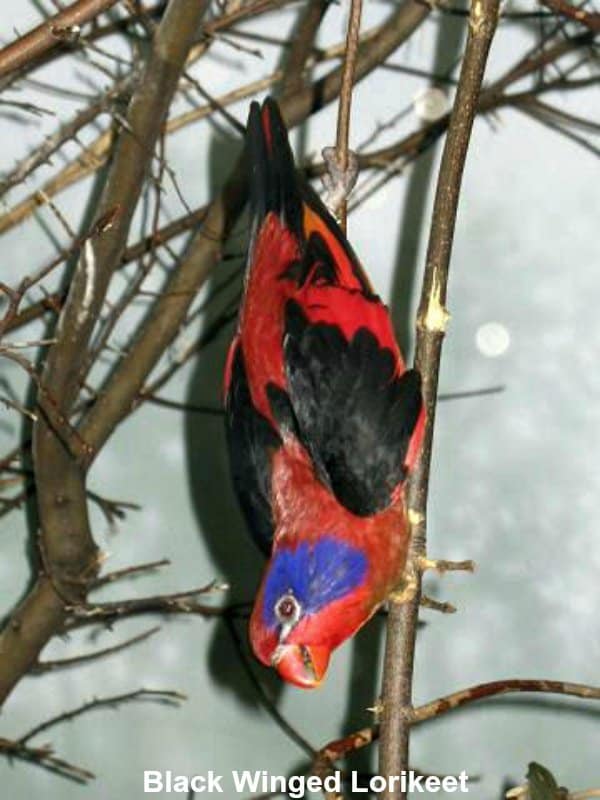
They are actually classified as a pest in Western Australia because flocks will attack fruit orchards yellow billed lorikeets and then move into more populated areas spreading
their wealth of powerful liquid poop among cars, humans, and sidewalks.
Written by Mitch Rezman
Approved by Catherine Tobsing
Your Zygodacty Footnote
Author Profile
Latest entries
 The Traveling BirdJune 26, 2025Can You Name 5 Parrot Species That Are Living Wild in the USA?
The Traveling BirdJune 26, 2025Can You Name 5 Parrot Species That Are Living Wild in the USA? Bird BehaviorJune 26, 2025How is it Parrots Are Problem Solvers Social Animals and Even Use Tools?
Bird BehaviorJune 26, 2025How is it Parrots Are Problem Solvers Social Animals and Even Use Tools? Bird & Parrot AnatomyJune 25, 2025How a Tiny Chemical Modification Makes Parrots Nature’s Living Paintings
Bird & Parrot AnatomyJune 25, 2025How a Tiny Chemical Modification Makes Parrots Nature’s Living Paintings PigeonsJune 20, 2025How Do Parrots Thrive in Cities Outside Their Native Habitats?
PigeonsJune 20, 2025How Do Parrots Thrive in Cities Outside Their Native Habitats?
This Post Has One Comment
Leave a Reply
You must be logged in to post a comment.


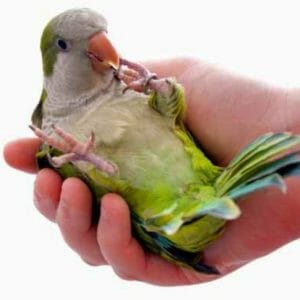
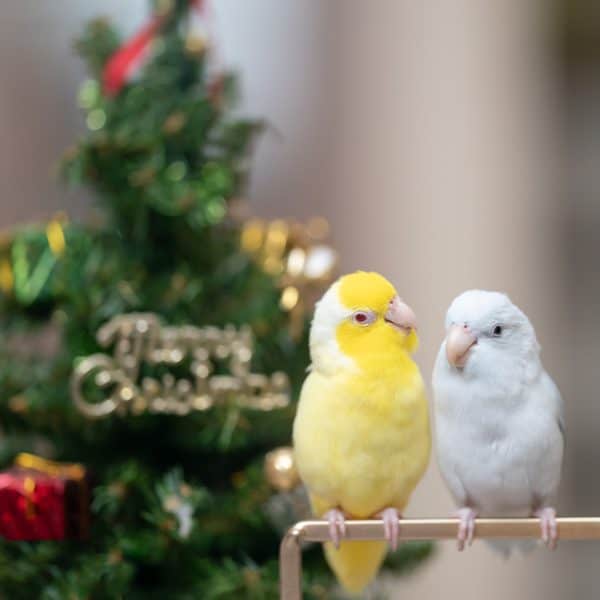
Mo Cahill
13 Nov 2016i have had 2 lories, and i did loved them, mess, ants and all.
i just wanted to comment so that other people dont make my mistake- i lost my little black capped to metal toxicity. she was a picky eater and one of the few fruits she like was oranges. i gave them to her often, clipping a half of clementine on a carabiner to hang in the cage. turns out it wasnt aluminum, like i thought, but zinc.
i kick myself the most for falling behind on her annual vet checks. pretty sure he would have picked it up long before i did.
we think the other fell to kidney damage caused by her habit of shaking the last drop of pop out of the cans she loved to find and knock around. we thought she was just enjoying the sound, never thinking that those last couple drops was what she was really after.
and again, probably religious vet checks might have caught this, tho we did take her in when she started showing her illness. we were distracted by a dust up w one of my dogs, which apparently had nothing to do with what was going on. but maybe a full check up instead of a- this bird is acting strange and this just happened- would have shown it.